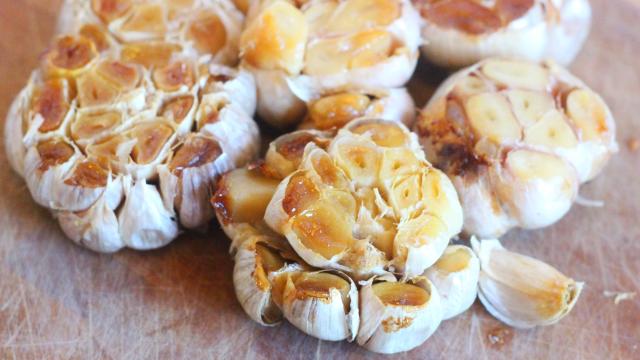I use my air fryer more than my oven, mainly because I’m rarely feeding more than two people at a time, and heating up the Big Oven to cook a couple servings of roasted vegetables seems like overkill. But casseroles and braises don’t fit in the air fryer, which means I’ll be turning on the oven quite a bit in the next few months. Rather than waste even a little bit of real estate, I like to sneak smaller foods in around larger dishes to get the biggest bang for my buck.
Toss some Yukon Gold potatoes in there
Mention a “baked potato” and most people will think of a russet, but Yukon Golds bake beautifully. As I’ve explained previously, “they come out burnished and shiny, with a crisp and delicate skin that shatters under slight pressure. It’s a textural delight … fluffy, sure, but still immensely creamy. Any and all dairy introduced to it emulsifies right into the flesh, with a slightly sweet flavor that holds up well to a heavy salting.”
Yukons bake best in between 160-170°C so nestle around larger dishes that cook in that temperature range for 60-90 minutes. No need to set them in a dish; they do great directly on the wire rack.
Roast a few heads of garlic
Roasted garlic might be my favorite form of garlic. What was harsh and pungent becomes mellow and sweet, and the cloves become soft and spreadable. It requires a little more prep work than potatoes, but not much. All you have to do is slice the top 1/4 inch off the top of the bulb, drizzle a little olive oil on the exposed cloves, and season with a pinch of salt. Wrap the bulb in a sheet of aluminum foil, and roast alongside larger dishes cooking at 175-200°C until soft and golden, 45 minutes to an hour.
Bake some beets
In terms of effort, roasting beets alongside larger dishes falls somewhere in between potatoes and garlic; you have to wrap them in foil, but you don’t have to peel or season them. Trim off their greens, scrub down the outsides, and wrap the still-wet beets in foil. Place them directly on the rack, with the seam of the foil facing up to keep the juices from dripping out. Roast them alongside larger dishes cooking somewhere in between 160-200°C, checking for doneness every 20-30 minutes. The beets are done when they can be easily pierced with a fork.
Once they’re cool enough to handle, you can peel the beets by rubbing them with a paper towel. Slice, salt, and add to salads, rice dishes, or anything else that would benefit from a bit of earthy sweetness.

Leave a Reply
You must be logged in to post a comment.